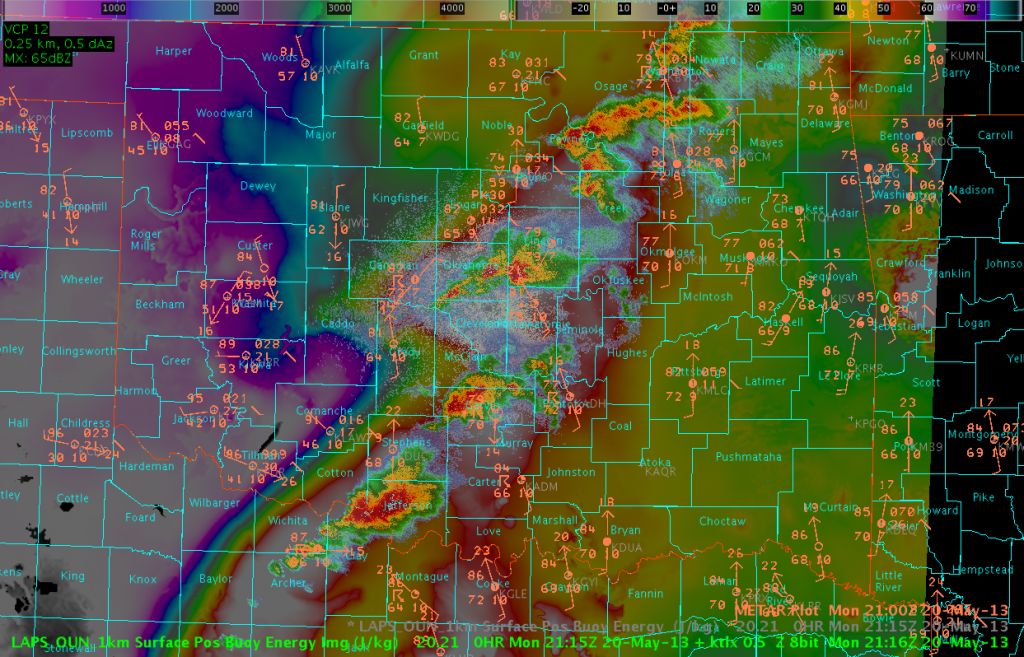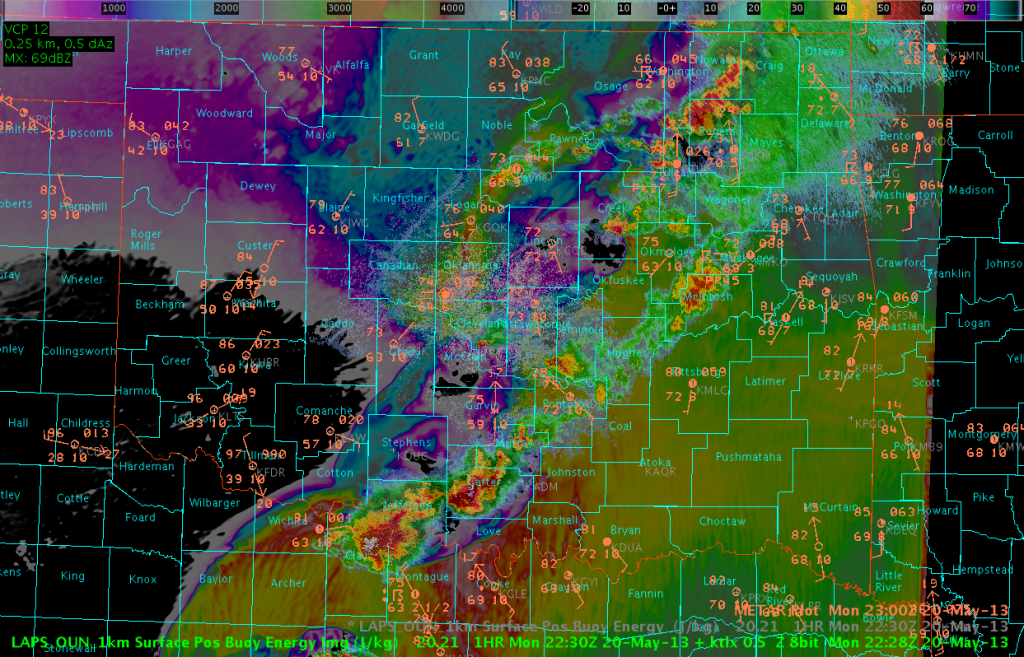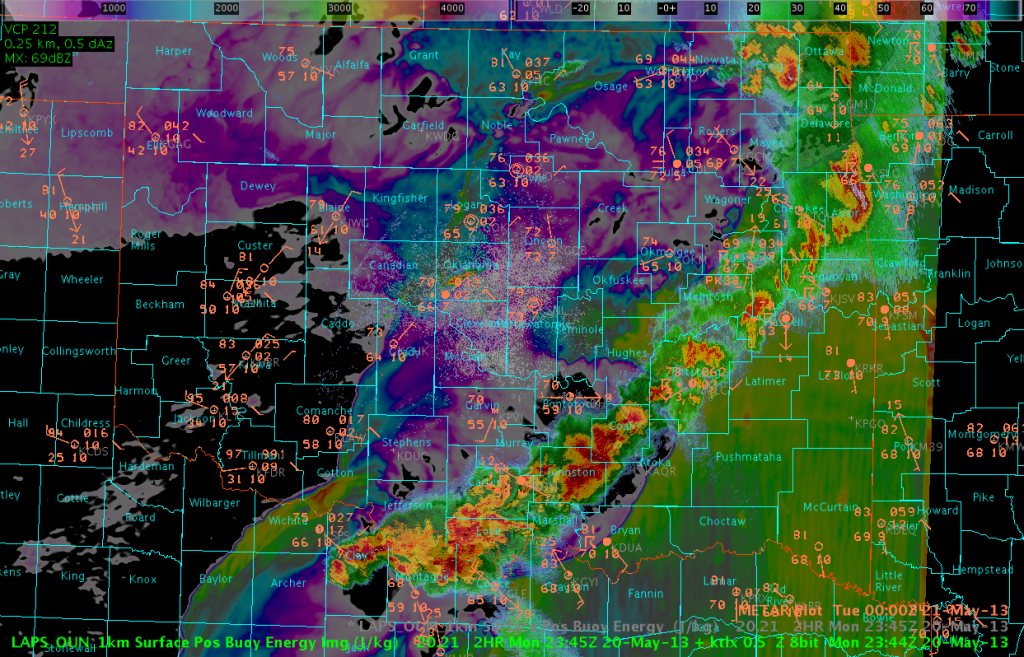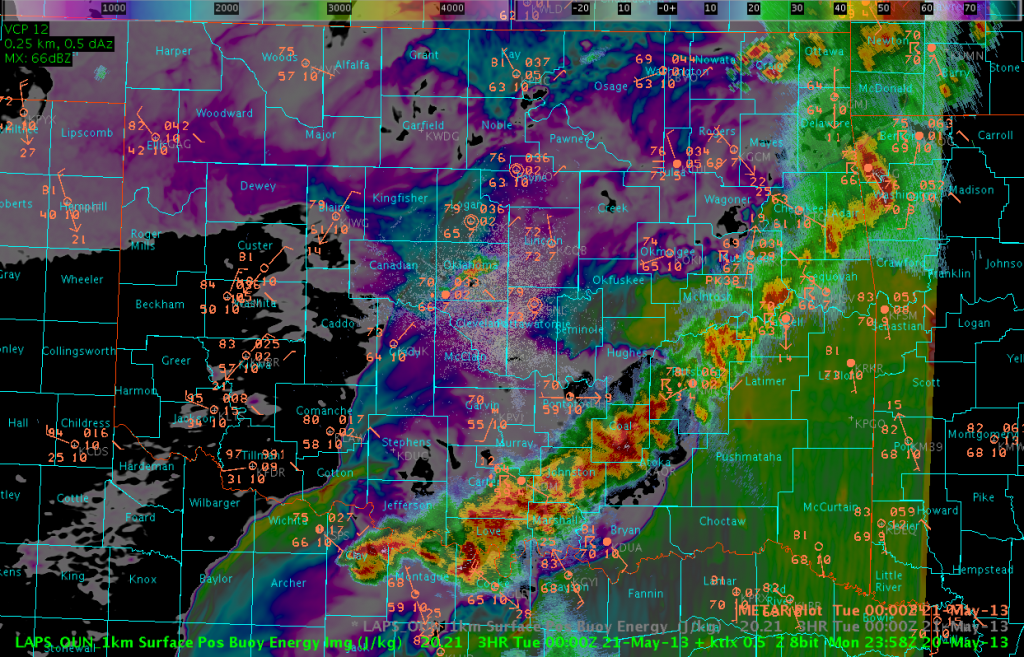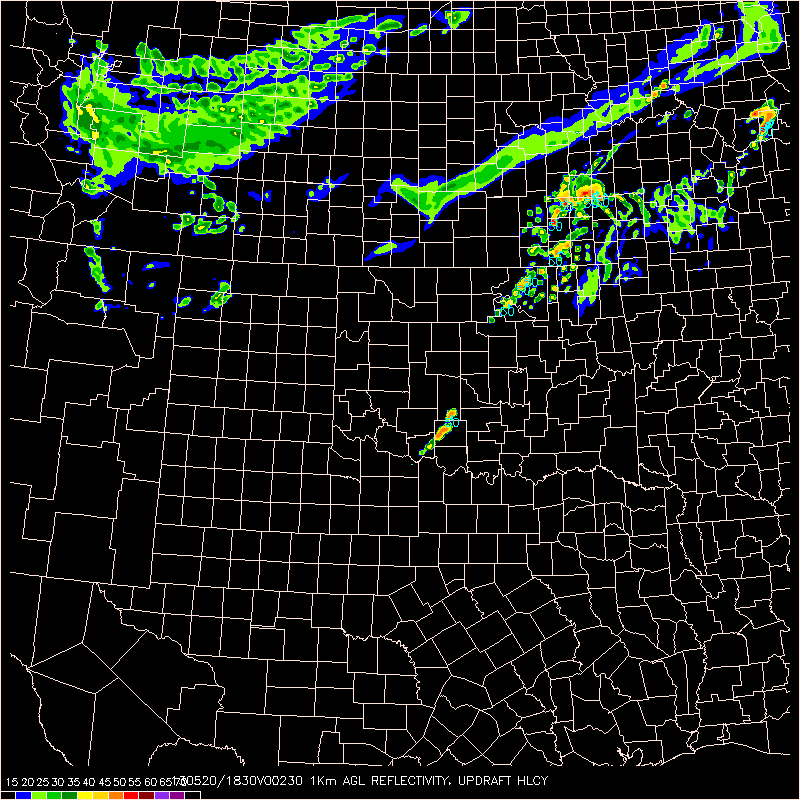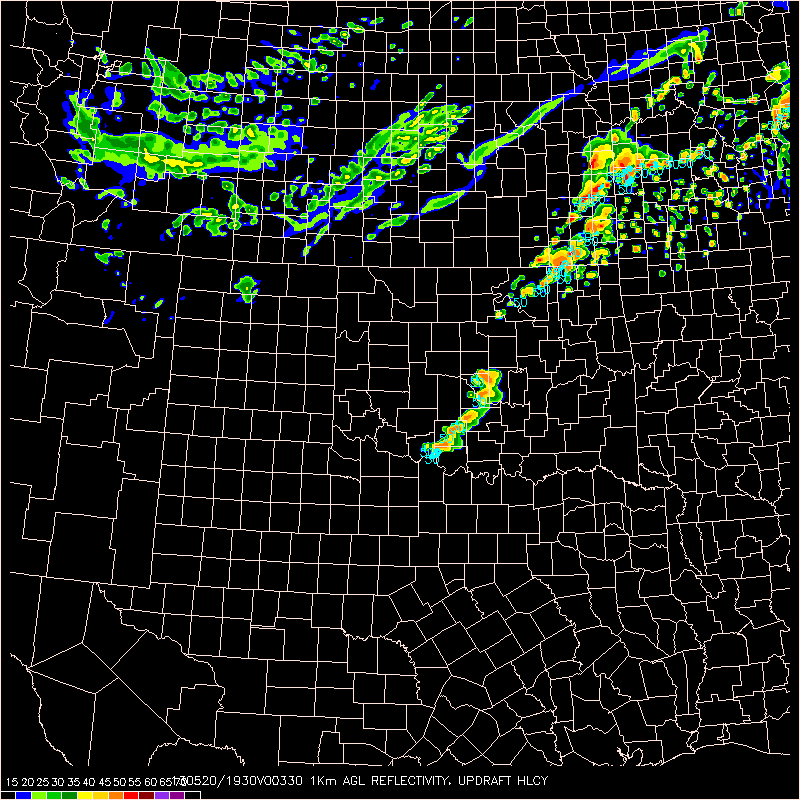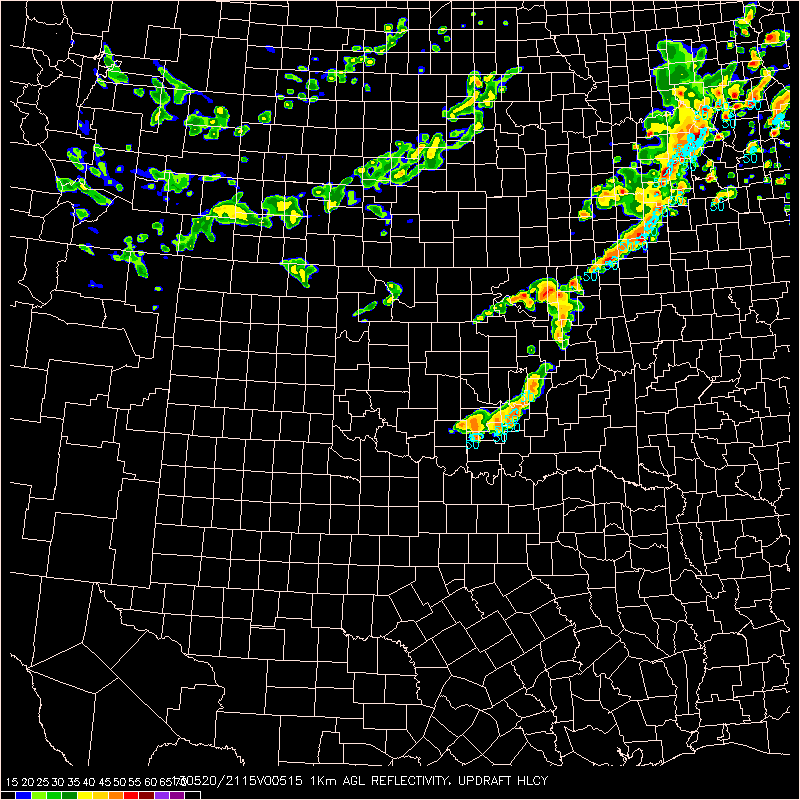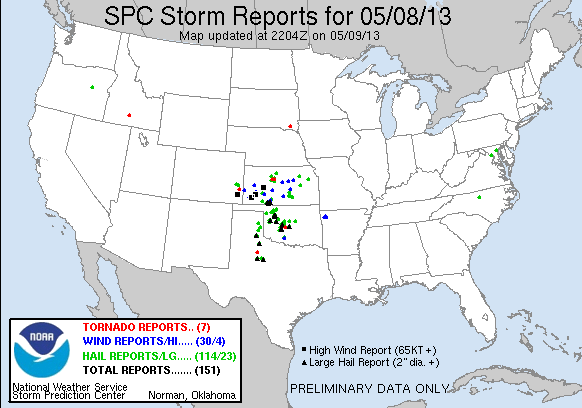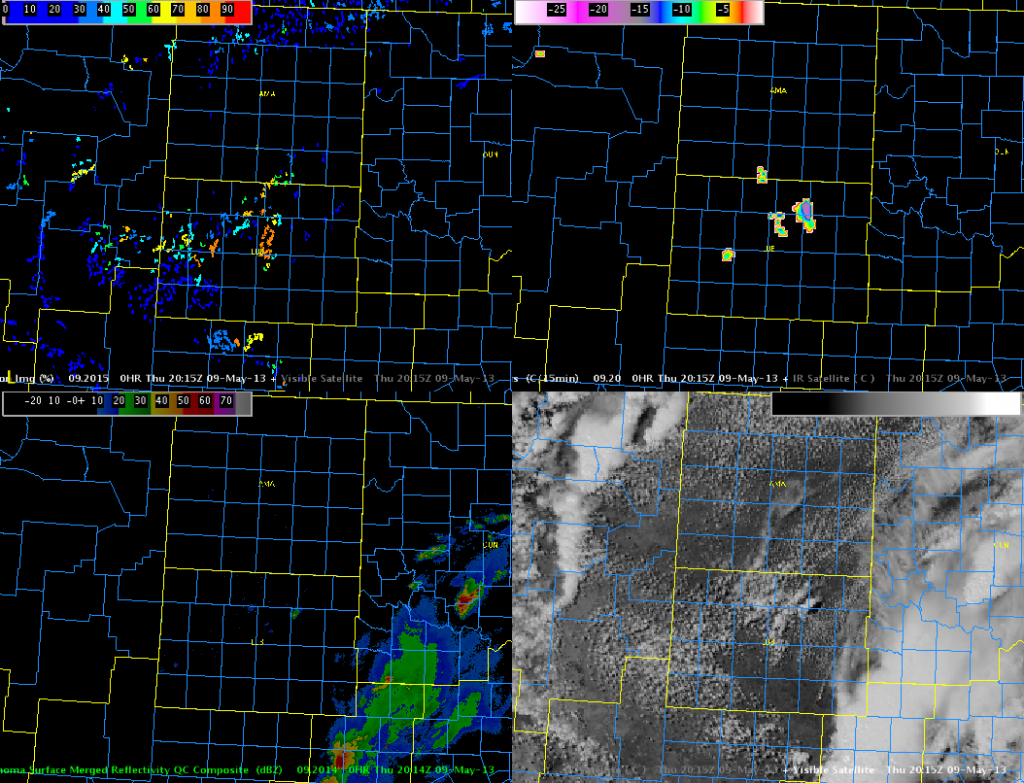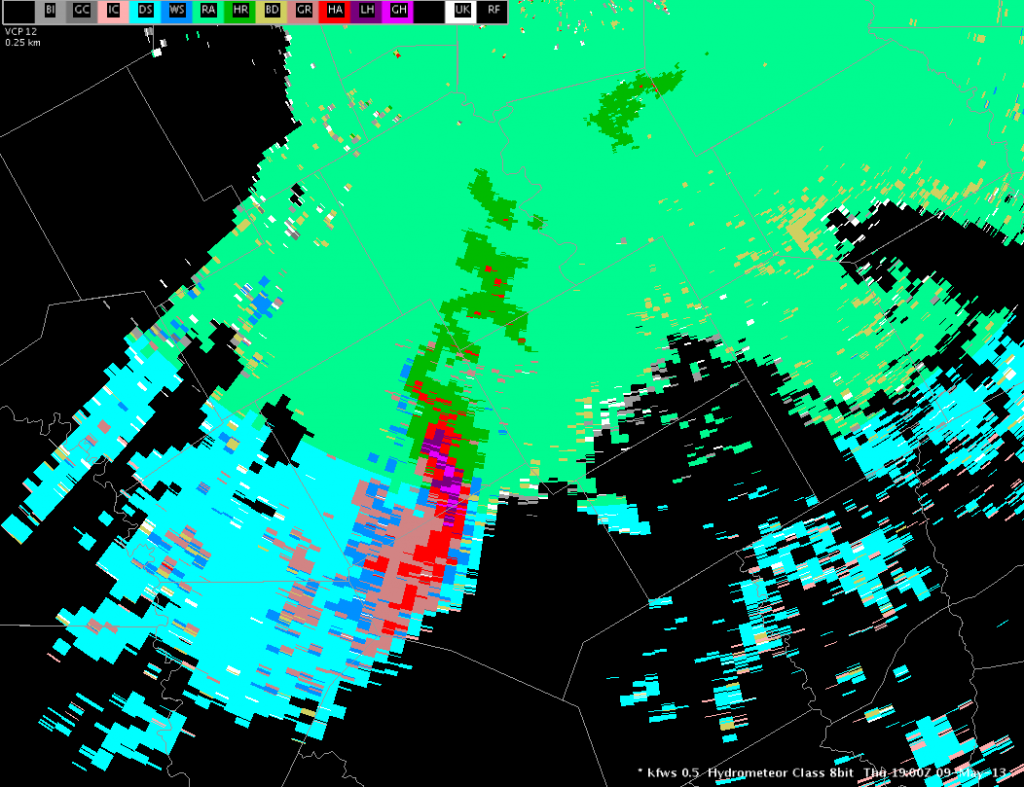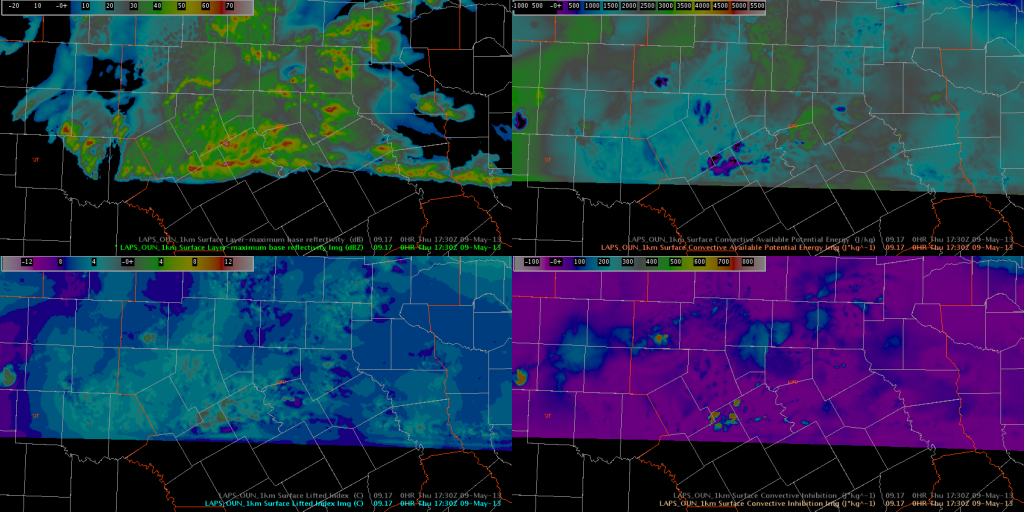EWP2013 PROJECT OVERVIEW:
The National Oceanic and Atmospheric Administration (NOAA) Hazardous Weather Testbed (HWT) in Norman, Oklahoma, is a joint project of the National Weather Service (NWS) and the National Severe Storms Laboratory (NSSL). The HWT provides a conceptual framework and a physical space to foster collaboration between research and operations to test and evaluate emerging technologies and science for NWS operations. The Experimental Warning Program (EWP) at the HWT is hosting the 2013 Spring Program (EWP2013). This is the sixth year for EWP activities in the testbed. EWP2013 takes place across three weeks (Monday – Friday), from 6 May through 24 May.
EWP2013 is designed to test and evaluate new applications, techniques, and products to support Weather Forecast Office (WFO) severe convective weather warning operations. There will be three primary projects geared toward WFO applications this spring, 1) evaluation of multiple CONUS GOES-R convective applications, including pseudo-geostationary lightning mapper products when operations are expected within the Lightning Mapping Array domains (OK/west-TX, AL, DC, FL), 2) evaluation of model performance and forecast utility of the OUN WRF when operations are expected in the Southern Plains, and 3) evaluation of model performance and forecast utility of the 1-km and 3-km WRF initialized with LAPS.
PARTICIPANTS:
We had six visiting NWS forecasters this week: Marc Austin (WFO, Norman, OK), Hayden Frank (WFO, Boston, MA), Jonathan Guseman (WFO, Lubbock, TX), Nick Hamphsire (WFO, Fort Worth, TX), Andrew Hatzos (WFO, Wilmington, OH), and Jonathan Kurtz (WFO, Norman, OK). The GOES-R program office, the NOAA Global Systems Divisions (GSD), and NWS WFO Huntsville’s Applications Integration Meteorologist (AIM) Program have generously provided travel stipends for our participants from NWS forecast offices nationwide.
Visiting scientists this week included Lee Cronce (Univ. Wisconsin), Geoffrey Stano (NASA-SPoRT), Isidora Jankov (NOAA/GSD), and Amanda Terberg (NWS Air Weather Center GOES-R Liaison).
Gabe Garfield was the weekly coordinator. Clark Payne (WDTB) was the “Tales from the Testbed” Webinar facilitator. Our support team also included Darrel Kingfield, Kristin Calhoun, Travis Smith, Chris Karstens, Greg Stumpf, Kiel Ortega, Karen Cooper, Lans Rothfusz, Aaron Anderson, and David Andra.
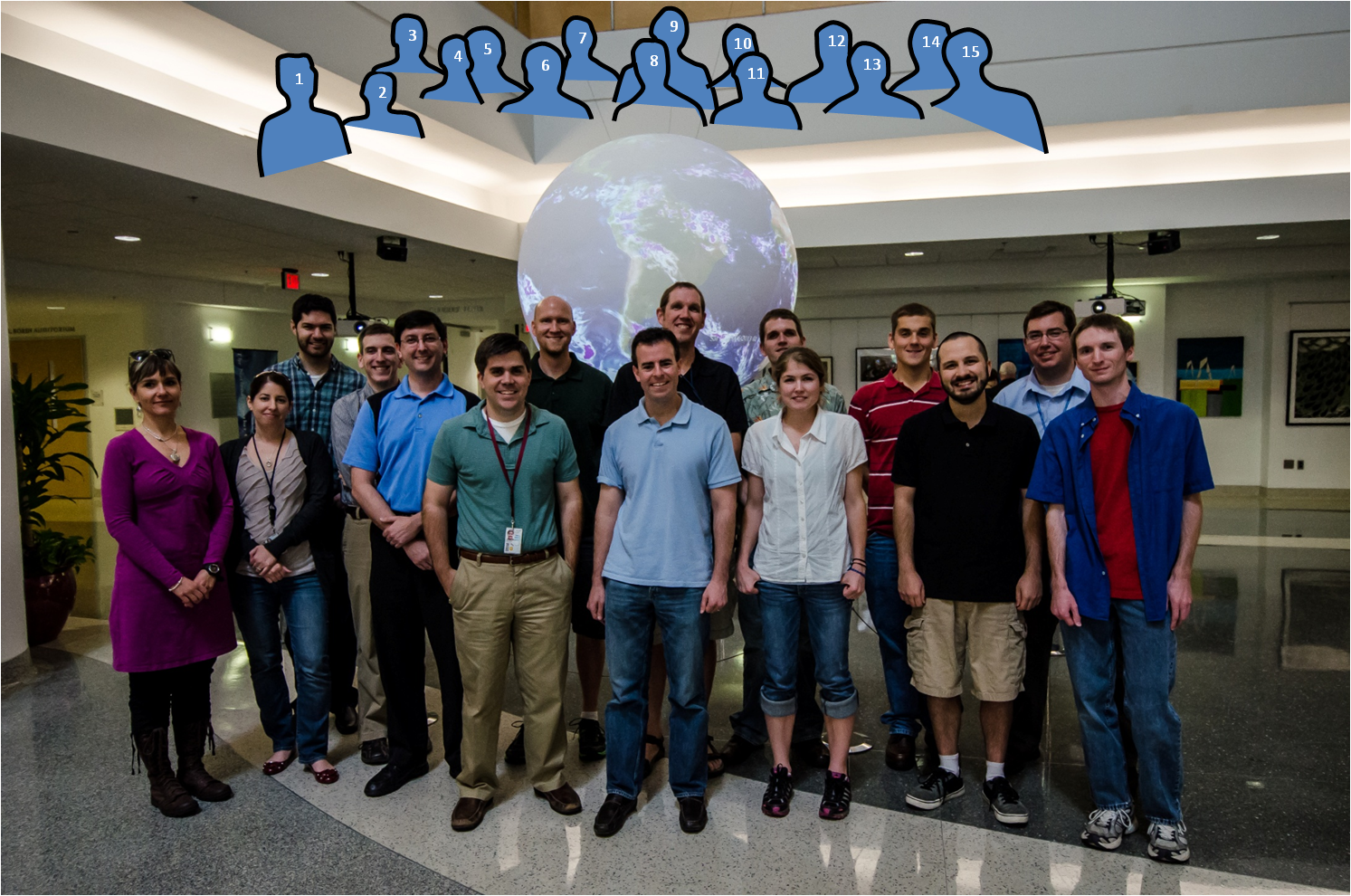
Experimental Warning Program Week #1 group photo. 1) Isidore Jankov (NOAA/ESRL/GSD), 2) Kristin Calhoun (CIMMS/NSSL), 3) Gabe Garfield (CIMMS/NWS/WFO/OUN), 4) Darrel Kingfield (CIMMS/NSSL), 5) Geoffrey Stano (NASA/SPoRT), 6) Nick Hampshire (NWS/WFO/Fort Worth, TX), 7) Lee Cronce (U. Wisc/CIMSS), 8 ) Hayden Frank (NWS/WFO/Boston, MA), 9) Greg Stumpf (CIMMS/NWS-MDL), 10) Marc Austin (NWS/WFO/Norman, OK), 11) Amanda Terborg (U. Wisc./CIMSS), 12) Jonathan Guseman (NWS/WFO/Lubbock, TX), 13) Kiel Ortega (CIMMS/NSSL), 14) Jonathan Kurtz (NWS/WFO/Norman, OK), and 15) Andy Hatzos (NWS/WFO/Wilmington, OH).
REAL-TIME EVENT OVERVIEW:
6 May: Blacksburg (RNK), Raleigh (RAH), and Lubbock (LUB): Marginally severe storms with hail and wind.
7 May: Goodland (GLD), Dodge City (DDC), and Lubbock (LUB): Severe storms in KS with large to very large hail; marginally severe storms in the Texas Panhandle.
8 May: Norman (OUN), Lubbock (LUB), and Dodge City (DDC): Widespread severe weather outbreak with hail and wind.
9 May: Fort Worth (FWD), San Angelo (SJT), and Lubbock (LUB): Supercells with large to very large hail and severe winds.
FEEDBACK ON EXPERIMENTAL PRODUCTS:
HSDA:
- Giant hail detections are too generous. Seems to be indicating giant hail when many reports are below 2”.
- The algorithm is good at detecting hail, but the area is too large.
- When using FSI to cut vertical cross-sections, the change to all red (any size hail) above melting layer was particularly noted.
MRMS:
- MESH underestimated hail size in colder core low on Monday; the algorithm did much better on Thursday.
- MESH and other hail diagnosis indicators underestimate hail size for left splits.
- Recommend adding a radial shear product, to help detect mid-altitude radial convergence (MARC) signatures.
- Has the greatest value in identifying hail threats; however, tornadoes will still always require examination of base data.
OUN WRF:
- Recommend a new convective initiation product that displays the probability of convection.
- Recommend a surface convergence product to monitor CI (there is a Severe Local Storms conference preprint by a Fort Worth WFO author).
Variational LAPS:
- Some WFOs deliver an enhanced short term forecast every 3 hours, and variational LAPS would be useful.
GOES-R UAH SatCast/UW Cloud-Top Cooling:
- The UAH CI product was found to be “too noisy”
- Would like to change color curve to filter out UAH CI Strength of Signal values below 50% (or some other threshold).
GOES-R PLGM and Lightning Trend Tool:
- Recommend adding capability to use trending tool in four panels. Right now, it only works in a single panel.
OVERALL COMMENTS:
- Suggest that the PIs sit with forecasters to write procedures on the first part of the first day of operations.
- All the products are useful and valuable; each forecaster will find their own ways to implement.
- Need to work with WDTB to determine an optimal way to attract forecasters to the new products so that they do not immediately default to their “comfort zones” of base products. Perhaps having an assistant forecaster or HMT monitor the new products side-by-side with the warning forecaster.
- Suggests starting week by incorporating experimental products and concluding week with just experimental products. However, many weeks won’t have quality storms each day.
- New product evaluation would probably not be helpful in a “canned case” – need real-time evaluation.
- Time allotted for surveys was adequate.
- Training was sufficient to prepare for week’s activities.
CONTRIBUTORS:
Gabe Garfield, EWP 2013 Week #1 Weekly Coordinator
Greg Stumpf, EWP 2013 Week #1 Back-up Coordinator
